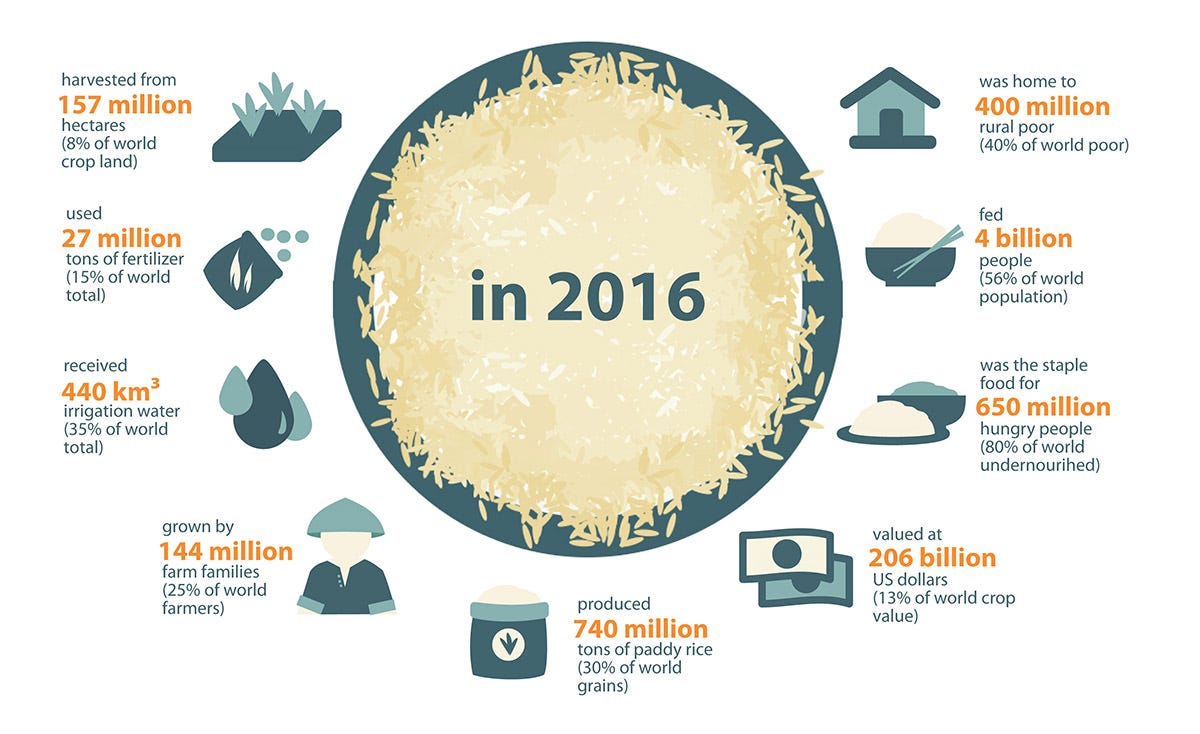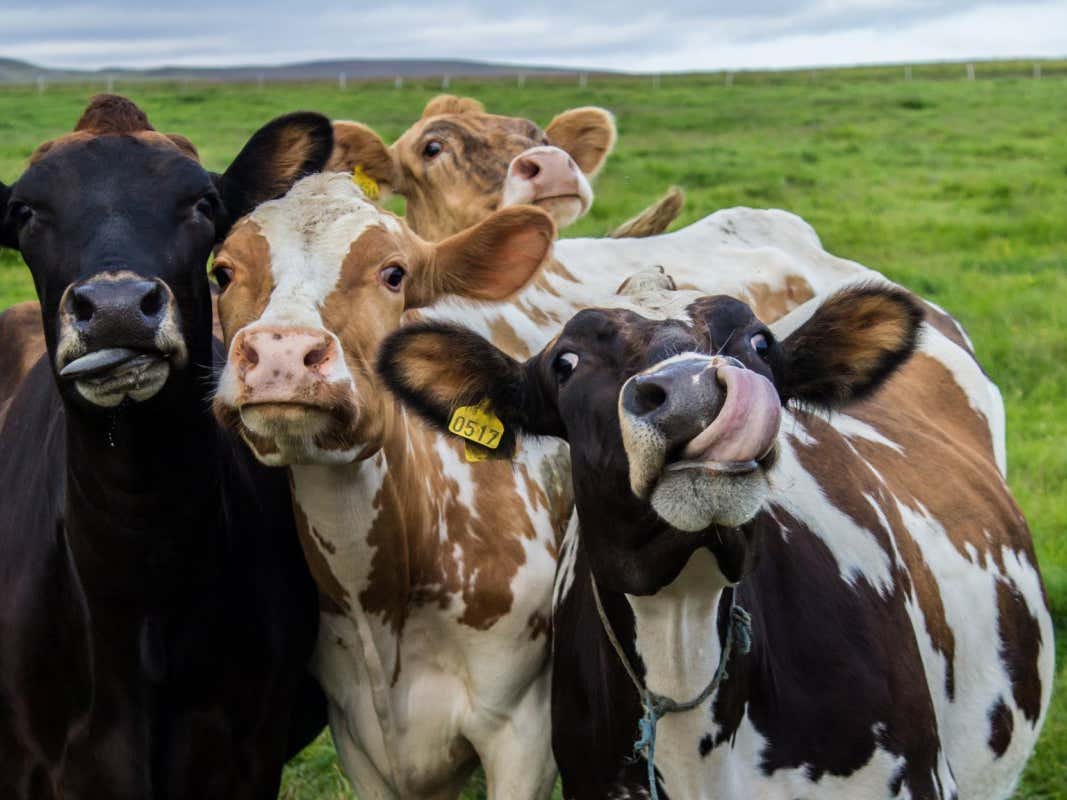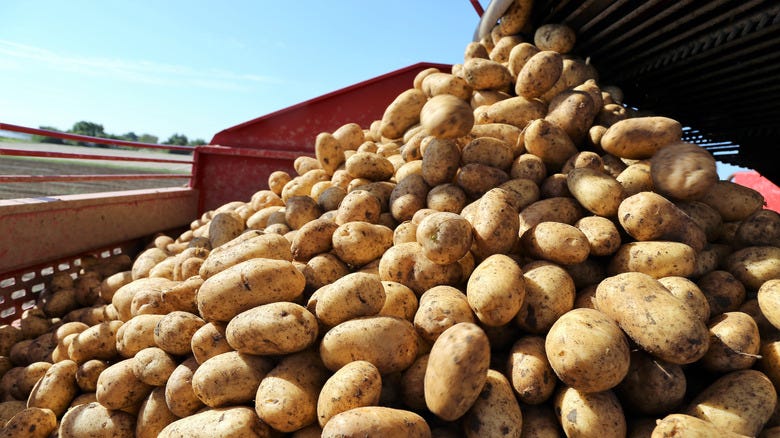News from a Changing Planet -- #31--News from Changing Plants
How will changing atmospheric concentrations of carbon dioxide affect the plants we eat?
What do rising carbon dioxide levels actually mean for plants? Plants need carbon dioxide for energy — they take it up from the atmosphere, and convert it into glucose for energy. So conventional wisdom says: more carbon dioxide is good for plants! But does more carbon dioxide mean more plants, or faster-growing ones, or neither? I ask you again, what does it all mean, Basil?

[A quick logistical note: starting next month, I will be adding a paid subscriber option. Free subscribers will get one issue per month, and if you pay ($5/month, $50/year), you will continue to get one article every 2 weeks, as well as a climate and environmental news roundup every week! I hope you will consider switching to a paid subscription. Also, I saw a dolphin in the East River this week!]
I was thinking about these questions earlier this week, when The Washington Post reported that the National CO2 Coalition, a group that rejects the scientific consensus on climate change, was kicked out of a teachers’ convention for distributing a comic book that described carbon dioxide as a “miracle molecule.” The comic highlighted CO2’s role in helping plants grow, while omitting any context about the other thing anthropogenic carbon dioxide emissions do: cause climate change.

This claim, which is rooted in scientific fact, has long been an argument from climate deniers and misinformers, but the science (unsurprisingly) is not that straightforward. Reading about this episode reminded me of the work of Lewis Ziska, a former scientist at the USDA Agricultural Research Service (who resigned in protest in 2019 when Trump administration officials tried to suppress one of his studies) and current professor at Columbia University, on climate change’s effects on the nutritional content of plants, including (and especially) most of the crops we depend on for food.
Plants take up carbon dioxide from the air, but other elements they need to grow (as do the species that eat them (us)) come from the soil: nitrogen, iron, zinc, and more. Our atmosphere is becoming carbon rich, but the mineral composition of the soil isn’t changing proportionally, so if they are taking up different amounts of carbon dioxide, they’re probably taking up different amounts of the other nutrients from the soil. This proportionality at the molecular level is called stoichiometry. How might that affect the plant’s nutritional value?
For the study that the Trump administration tried to bury, Ziska and his colleagues looked at how rising carbon dioxide levels were affecting the nitrogen content of rice. (Nitrogen is an important building block for protein, so nitrogen was used as a proxy for protein, which is itself harder to measure.)
Why rice? Well, around the world, 650 million people get more than half of their calories from rice; about half the global population eats rice every day.
As it turns out, with higher atmospheric concentrations of carbon dioxide, like those we will probably reach by mid-century, levels of nitrogen, iron, and zinc in various strains of rice declined by about 10 percent, as did those of several vitamins — B1, B2, and B9. The amount of vitamin E on the other hand went up because, unlike B-vitamins, it contains no nitrogen.
But it’s not just rice that’s affected: for a number of basic crops — wheat, barley and more — there were declines in protein. The global population gets about three-quarters of its food supply from 12 crops and 5 animal species, so the changing composition of these few crops could have huge ramifications for global nutrition.
And animals are affected too, indirectly. Elevated levels of carbon dioxide also caused nitrogen declines in pasture grasses for cattle. When the nitrogen declined, the cows grew more slowly. This is bad for ranchers, looking to sell their beef. It’s also bad for the rest of us: cows living for longer have to graze for longer, requiring more energy and water, and also burping out more methane that further warms the atmosphere.
This is, admittedly, not great news. And it’s made worse by the way we grow food, even beyond the limited number of few species we’ve chosen to load up on. Market pressures also dictate what types of individual species we grow. The textbook example is the Russet Burbank potato, which accounts for about 60 percent of the potatoes grown in Idaho, which, as the country’s largest producer, grows about 12 billion pounds. That’s because McDonald’s prefers the Russet Burbank (along with four other potato varieties), and McDonald’s buys about 3.4 billion pounds of potatoes every year, so that’s what farmers in Idaho and elsewhere grow.
One of the consequences of all of these exact-same-kind-of-potatoes bulging in the Western soil is that we are losing genetic diversity in our potatoes. So, if Russet Burbank potatoes don’t thrive in the climatic conditions we’re headed for — hotter, more carbon rich, extreme swings between precipitation and drought — then potato crops might fail, which is tough for farmers and tough for eaters (and tough for McDonald’s and the people who work there). But it’s also clear that different varieties of potatoes and other crops respond differently to these changes.
For example, another of Ziska’s studies found that wild rice varieties grow more under higher concentrations of carbon dioxide than cultivated ones, indicating that growing more of these wild strains, or introducing their DNA into cultivated lines, could help us exploit rising carbon dioxide levels in rice and other crops.

This seems like a no-brainer — to take advantage of the genetic potential that has adapted to various conditions over millions of years to make our food system more resilient, without relying on chemical fertilizers or pesticides, and preparing for a large range of different conditions.
In some parts of the world, this is just how you do things. In Andean Peru, home of the potato, farmers have adapted specific potato lines to the many microclimates in that mountain range. Around the margins of cultivated areas, potato growers plant wild varieties, resulting in a motley, patchwork assortment of loads of different kinds of potatoes. This way, the farmers can see how different potatoes did in different conditions — which potatoes did well with less water or cooler temperatures, etc., and plan for that at the next planting time. And the wild and cultivated potatoes exchange DNA among themselves, allowing for a natural process of breeding in these advantageous traits.

This kind of work is also crucially important as we think about the global supply of food and nutrition for a growing population. A few issues ago, I wrote about the importance of basic science research when it came to fish sociality, ocean ecology, and nutrition in Pacific Island nations. This work on the nutritional value of rice is connected to that too — with overfishing, many populations that depend on the ocean for their protein and micronutrients may be subsisting on rice. What happens to their health and their futures if rice becomes less nutritious over time?

It’s also a no-brainer move not to suppress the important work of government scientists. While industry should make the investment to adapt to climate change, they don’t often fund the basic science research that enables later commercial applications — governments do that, and usually, society benefits in the long run — or they give grants or subsidies. Think about the Internet, accurate weather forecasting, vaccines, MRIs, semiconductors, enriched infant formula, GPS, the Human Genome Project, Google, the kidney matching program, Tesla…
But before that research bears fruit, if the government adapts a hostile stance towards knowledge itself, it’s all of us who suffer, in this case with the possibility of lower food yields and lower crop nutrition, but, as we all know all too well from the experience of the COVID-19 pandemic, the consequences can be much more immediate and personally disastrous.
And to end things on a slightly more hopeful note, here is a poem by Kay Ryan about seeds and planning ahead:
In Case of Complete Reversal by Kay Ryan
Born into each seed
is a small anti-seed
useful in case of some
complete reversal:
a tiny but powerful
kit for adapting it
to the unimaginable.
If we could crack the
fineness of the shell
we’d see the
bundled minuses
stacked as in a safe,
ready for use
if things don’t
go well. Thanks for reading!
Tatiana






